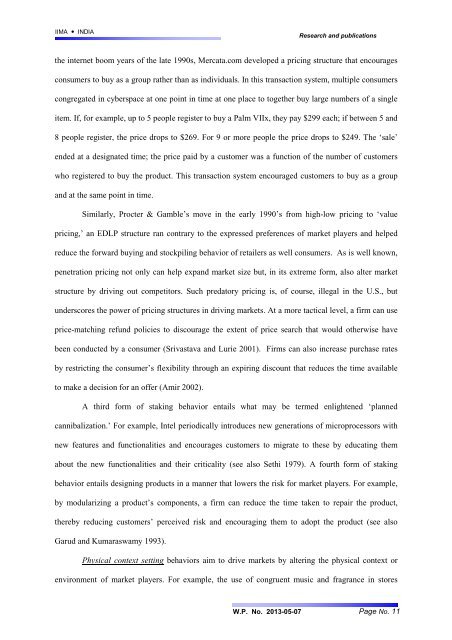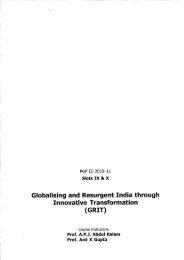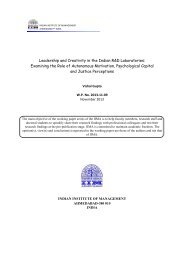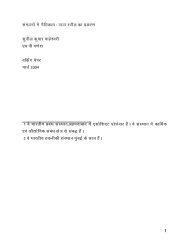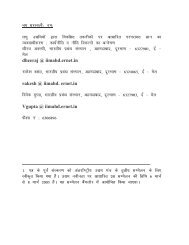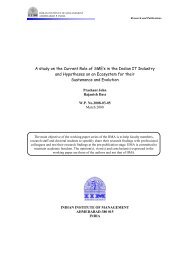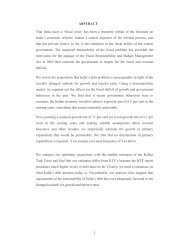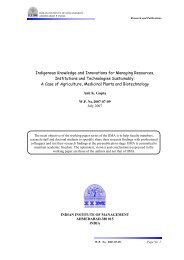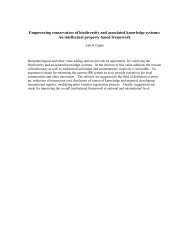to Download (English) File - Indian Institute of Management ...
to Download (English) File - Indian Institute of Management ...
to Download (English) File - Indian Institute of Management ...
Create successful ePaper yourself
Turn your PDF publications into a flip-book with our unique Google optimized e-Paper software.
IIMA INDIA<br />
Research and publications<br />
the internet boom years <strong>of</strong> the late 1990s, Mercata.com developed a pricing structure that encourages<br />
consumers <strong>to</strong> buy as a group rather than as individuals. In this transaction system, multiple consumers<br />
congregated in cyberspace at one point in time at one place <strong>to</strong> <strong>to</strong>gether buy large numbers <strong>of</strong> a single<br />
item. If, for example, up <strong>to</strong> 5 people register <strong>to</strong> buy a Palm VIIx, they pay $299 each; if between 5 and<br />
8 people register, the price drops <strong>to</strong> $269. For 9 or more people the price drops <strong>to</strong> $249. The ‘sale’<br />
ended at a designated time; the price paid by a cus<strong>to</strong>mer was a function <strong>of</strong> the number <strong>of</strong> cus<strong>to</strong>mers<br />
who registered <strong>to</strong> buy the product. This transaction system encouraged cus<strong>to</strong>mers <strong>to</strong> buy as a group<br />
and at the same point in time.<br />
Similarly, Procter & Gamble’s move in the early 1990’s from high-low pricing <strong>to</strong> ‘value<br />
pricing,’ an EDLP structure ran contrary <strong>to</strong> the expressed preferences <strong>of</strong> market players and helped<br />
reduce the forward buying and s<strong>to</strong>ckpiling behavior <strong>of</strong> retailers as well consumers. As is well known,<br />
penetration pricing not only can help expand market size but, in its extreme form, also alter market<br />
structure by driving out competi<strong>to</strong>rs. Such preda<strong>to</strong>ry pricing is, <strong>of</strong> course, illegal in the U.S., but<br />
underscores the power <strong>of</strong> pricing structures in driving markets. At a more tactical level, a firm can use<br />
price-matching refund policies <strong>to</strong> discourage the extent <strong>of</strong> price search that would otherwise have<br />
been conducted by a consumer (Srivastava and Lurie 2001). Firms can also increase purchase rates<br />
by restricting the consumer’s flexibility through an expiring discount that reduces the time available<br />
<strong>to</strong> make a decision for an <strong>of</strong>fer (Amir 2002).<br />
A third form <strong>of</strong> staking behavior entails what may be termed enlightened ‘planned<br />
cannibalization.’ For example, Intel periodically introduces new generations <strong>of</strong> microprocessors with<br />
new features and functionalities and encourages cus<strong>to</strong>mers <strong>to</strong> migrate <strong>to</strong> these by educating them<br />
about the new functionalities and their criticality (see also Sethi 1979). A fourth form <strong>of</strong> staking<br />
behavior entails designing products in a manner that lowers the risk for market players. For example,<br />
by modularizing a product’s components, a firm can reduce the time taken <strong>to</strong> repair the product,<br />
thereby reducing cus<strong>to</strong>mers’ perceived risk and encouraging them <strong>to</strong> adopt the product (see also<br />
Garud and Kumaraswamy 1993).<br />
Physical context setting behaviors aim <strong>to</strong> drive markets by altering the physical context or<br />
environment <strong>of</strong> market players. For example, the use <strong>of</strong> congruent music and fragrance in s<strong>to</strong>res<br />
W.P. No. 2013-05-07 Page No. 11


